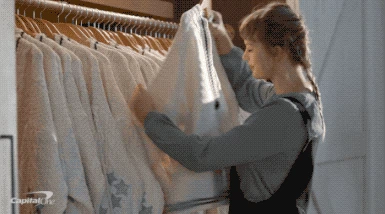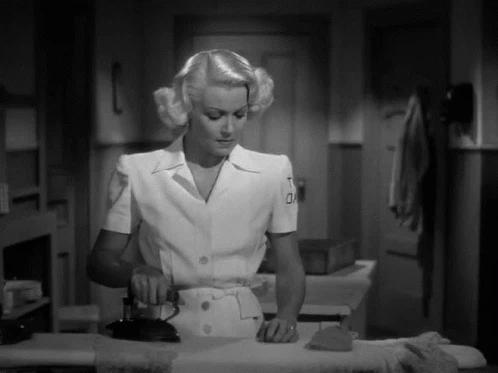How To Care For Your Clothes So They Stay Nice For Years To Come
If you’re the woman who throws everything in the washer and dryer without ever consulting tags, then you might be wondering why your clothes are not lasting through multiple seasons. And while washing per the item directions is important, there are many other considerations for caring for your clothing.

Correctly washing and drying your clothes can extend the life of your most worn pieces. Reading the care tags on your clothing items is a great place to start, but there are often more requirements hidden in the short descriptions on that fabric tag. Other key pieces of information are your washer and dryer settings, as well as how to store clothing in the off-season and how to care for the specific fabrics and delicate pieces that make up your wardrobe!
Let’s get into it!
How To Prevent Moths
When storing your clothes, attacks from moths might be a serious issue. Moths hate lavender, cloves, rosemary, and thyme, so it might be worthwhile to store your clothes with a pouch of any of these dried herbs. Lavender smells lovely, so this is a great choice when storing your vulnerable clothing pieces. Moths, more specifically moth larvae, only attack clothing made from animal fibers, so you’ll want to be extra careful with wool, leather, silk, felt, and fur pieces.
How To Store Seasonal Clothes
If the seasons look radically different where you live, you probably use spring cleaning as an opportunity to switch your closet over from the fall/winter to your spring/summer pieces. Storing seasonal clothes can be a hassle, so here are some easy tips to follow!
First, don’t store anything you don’t plan on wearing next year. If your clothes are outdated, worn out, or weren’t worn, then don’t use mental and physical space to keep them for another year! Find a donation bin, sell them on Poshmark, or give them away to someone in need. Next, wash your seasonal clothes and make any necessary repairs before storing them for the season. Missing a button on your favorite sweater? Fix it now!
Next, store your clothes in a plastic container, as opposed to a cardboard box. You can also store your seasonal clothes (as well as flannel sheets and extra blankets) in these fabric storage bags that will sit upright on the top shelf of your closet. Add a pouch of lavender inside, and these bags will keep your clothes safe from moths and other pests until next season.
Also, don’t hang sweaters or other delicate pieces in your closet. Gravity will pull the threads of your sweaters down, leaving you with a closet full of misshapen and stretched-out sweaters! Ugh!

How To Wash
Washing your clothes takes a bit of effort to do properly, but it’s totally worth it to keep your favorite clothes looking brand new! A regular wash cycle is best for dirty clothes and sturdier fabrics, like denim or even towels, whereas a delicate cycle is best for lace, lingerie, and other delicate pieces. Washing your clothes inside out is another great way to keep your clothes colorful and maintain the integrity of the fabric.
Make sure to sort your clothes according to color. Use hot water for white loads, and cold water for brighter colors, as long as the fabric type doesn’t specify a different method. And take your clothes out of the wash as soon as possible once they’re done. Letting your washed clothes sit in the machine before drying can add mildew, other unclean scents, and leave your clothes wrinkly and damaged.
Drying Temperatures
Okay, let’s talk dryer temperature settings. Don’t be fooled – the high heat settings may dry your clothes a few minutes faster, but they can ruin them as well! You can dry heavy items like towels and most jeans on a high heat setting. If your jeans have stretch, then dry them with the rest of your stretchier clothing on low heat. Stretch items include activewear, leggings, socks, and baby clothes. Everyday items made of jersey or cotton blends can be dried at medium heat.
Your delicate pieces shouldn’t be in the dryer at all. You’ll want to dry your knits, delicates, and lingerie pieces on a flat surface that won’t stretch or snag the fabric!

Lastly, skip the dryer sheet, which can leave a chemical residue on your clothes, and opt for wool balls to soften your clothes in the dryer.
Tumble Dry Low
Now that we’ve established dryer temperatures, what does tumble dry low mean? This is just another way to say dry on the lowest setting. Spandex and activewear need to be dried on the lowest heat setting, so these items would fall under the tumble dry low setting. You can also dry some delicate pieces, like lingerie and spandex activewear, on the tumble dry low setting.
To set your dryer on this setting, it’s likely named the delicate or gentle dry setting. Choosing this option will automatically set your dryer at its lowest setting, protecting your delicate pieces as they dry. Keep in mind, however, that this setting will add more drying time!
Why Do Some 100% Cotton Clothes Say To Air Dry?
Some 100% cotton clothing pieces tell you to air dry. But why? Drying your clothes in the dryer, especially on a higher heat setting, will shrink your garments beyond practical wear. Or the item may contain an element – like elastic smocking or embroidery – that could be affected by heat more than the cotton. It’s best to let these pieces air-dry after washing to keep the fabric from shrinking.
Hang dry these items in a cool environment, because the sun (yes, the sun!) can actually shrink the pieces as well. Before air drying, make sure you’re washing the pieces in cold or lukewarm water, and handwashing is advised. If handwashing is not possible, the delicate cycle on your washing machine is a good alternative, but only use cold water.
Steam vs Ironing
Clothing irons have been around for a long time (think 1950s-era housewife advertisements), whereas the steamer is a relatively new item that uses a centuries-old technique for removing wrinkles. It all comes down to the fabric!
An iron is a better choice for thicker, sturdier fabrics that need the pressure and heat of an iron. Denim, cotton, and canvas are difficult to steam, but an iron will quickly remove wrinkles without damage. A steamer is also less effective at creating pleats, cuffs, creases, and hems, so you’ll need an iron for that crisp look.

Using a steamer will allow you to remove wrinkles from corduroy and velvet – two fabrics that are easily ruined by “crushing” them with the pressure of an iron. Delicate fabrics like silk or chiffon should also be steamed rather than ironed, to preserve the fabric.
Closing Thoughts
Taking care of your clothes is an important part of having great style. Following these tips will make your clothes last for years to come!
Love Evie? Sign up for our newsletter and get curated content weekly!